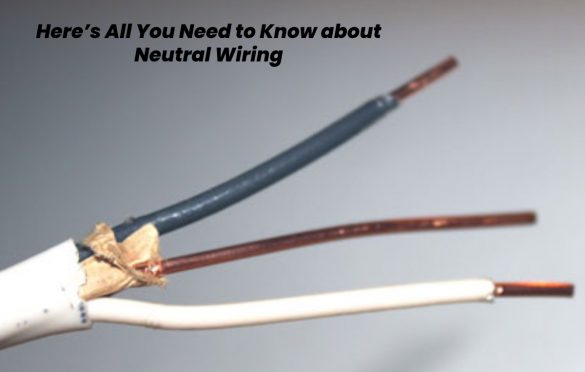
Here’s All You Need to Know about Neutral Wiring
Neutral Wiring – The most challenging part of installing an electrical appliance in a home is its wiring. Unfortunately, as DIY smart home gadgets grow in the market, many homeowners choose to install their own devices without fully understanding how to wire them properly.
The wiring in every house constructed before the 1980s is older and very certainly does not contain a neutral wire. Neutral wires are most likely present in newly constructed or renovated residences.
It is rather important to have basic knowledge of how your home’s electrical system functions before working on a project to improve it. The most important component of the electrical system is wiring since its main responsibility is to distribute electricity all through the house.
In household electrical systems, there are three wires: a hot wire (often black), a neutral wire (commonly white), and a ground wire (typically green or bare copper). Together, the three parts make sure that electricity is distributed evenly and safely within the house.
All three wires must be understood independently, although, in contrast to the hot and ground wires, most individuals are less knowledgeable about the neutral wire. Consequently, the objective of the neutral wire will be covered in this article.
Table of Contents
Let’s Begin!
What is a Neutral Electrical Wire?
Have you ever wondered what is a neutral wire? The neutral wire ensures that the circuit’s electrical path has no hurdle. It functions as a route when electricity is passing through the hot wire. Each circuit receives its electric supply from a hot wire.
After a hot wire initiates a circuit, a second wire is required to finish the circuit. This is where the neutral wire comes in. In other words, the neutral wire is connected to the ground, which is then usually connected to the electrical panel itself.
This wiring procedure ensures that current is flowed throughout the electrical system, enabling full use of electricity. Moreover, this stops excessive or problematic currents from lingering in electrical outlets.
But, here arises a question – how precisely can the neutral wire’s colour be determined? You can tell that the wire is neutral by its white or grey housing. However, despite the fact that neutral wires do not constantly carry an electrical current, they still need to be handled with the same level of care as hot wires.
Both the hot and neutral lines in a device have power, therefore they can be used interchangeably. The neutral wire is the only one that differs from the other because it is grounded.
What is the Use of a Neutral Wire?
A typical household electrical circuit has three unique wires, all of which have a specific purpose. For instance, the ground wire is usually bare copper or green in colour and the hot wire is black or white. In comparison to the ground and hot wire, the neutral wire is all colour-coded.
To function effectively, every piece of electrical gear or equipment needs to be linked to a closed circuit. In a closed circuit, electricity travels from the primary source through the object and then goes all the way back to the primary source.
The circuit must be completed by the neutral wire linking it to the electrical panel. Despite being referred to as “neutral,” the neutral wire receives the same amount of electricity as a hot wire. The neutral wire’s absence of voltage is the only distinction.
The neutral wire in circuits in the majority of modern homes is in no way analogous to the ground wire, and this is an important realization. The grounding wire does not actually transport any power until something goes wrong; it only acts as a safety precaution to prevent excessive energy from causing any damage to your devices and appliances.
What Can You Do if Neutral Wire Is Missing?
If you find that there is no neutral wiring in the house, there are two things you can do. To start with, you can reach out to your electrician and get one installed for you. The electrician will need to enter drill into the walls to attach the cable. This way, he can also examine your other wiring in place.
The second thing you can do is to choose the best smart switches or lighting that has no need for a neutral wire. Up until recently, many companies did not take into account the older homes’ electrical needs. But today’s market is flooded with sophisticated gadgets that enable modernizing homes without the use of a neutral line.
Can A Neutral Wire Create an Electric Shock?
The chance of getting shocked by a neutral wire exists. Even though neutral connections are thought to have no potential, someone could still get shocked if the entire electrical system is out of balance.
Despite the fact that it can be hazardous if the earth’s path is not clear, the neutral wire is also connected to the ground. The protection device shouldn’t trip if the neutral wire is grounded because it will transport current otherwise.
Final Thoughts
For smart home devices that need a power supply to continuously communicate with a hub, the neutral wire is crucial. If the power is turned off, the smart device won’t be able to interact with the hub because while the power is out, the neutral wire provides the current.
For the safety of both you and the equipment, it is essential to properly comprehend neutral wires before undertaking any DIY house wiring or installation. Any rewiring within the residence is best handled by a licensed expert or installation company.

